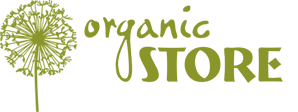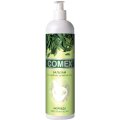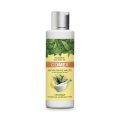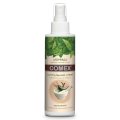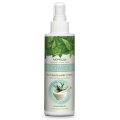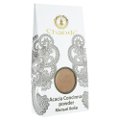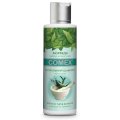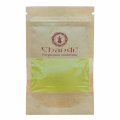 Most mass market shampoos these days are formulated with sulfates, such as sodium laureth sulfate or ammonium lauryl sulfate, as surfactants. Although there is no proof that sulfates are actually dangerous for human health, they can irritate the skin and cause itchy and flaky scalp. If you have sensitive scalp, you can try to replace your mass market shampoo with homemade herbal shampoo with shikakai.
Most mass market shampoos these days are formulated with sulfates, such as sodium laureth sulfate or ammonium lauryl sulfate, as surfactants. Although there is no proof that sulfates are actually dangerous for human health, they can irritate the skin and cause itchy and flaky scalp. If you have sensitive scalp, you can try to replace your mass market shampoo with homemade herbal shampoo with shikakai.
The goal of using shampoo is to remove dirt and grime without stripping the hair of natural oils. Shampoo generally contains some kind of surfactant, such as sodium lauryl sulfate, sodium laureth sulfate, ammonium lauryl sulfate, cocamidopropyl betaine, etc. Synthetic surfactants are widely used in the cosmetic industry because they are cheap, but many of them are contact allergens. That’s why individuals prone to allergic reactions prefer natural shampoos formulated with botanical (plant-derived) surfactants.
Saponins are a great example of plant-derived surfactants. They are a class of chemical compounds that produce soap-like foaming when shaken in aqueous solutions. Saponins are found in particular abundance in various plant species, such as reetha (Sapindus mukorossi) and shikakai (Acacia concinna).
Shikakai is a climbing shrub native to Asia. Due to its high saponin content, it has a long history of use as a shampoo and a detergent in the Indian subcontinent. Shikakai is one of the Ayurvedic plants. Alongside saponins, its fruit pods, leaves and bark contain vitamins, minerals and antioxidants.
Indian women prepare traditional shampoo from shikakai powder made from ground fruit pods, leaves and bark of the plant. The powder is mixed with water to obtain a paste and then applied to hair. While shikakai shampoo does not produce as much lather as a sulfate-based shampoo would, it is considered as a good yet mild cleanser.
DIY shampoo with shikakai has a naturally low pH and won’t strip your hair of natural oils. It also helps to detangle the hair, so you won’t even have to use conditioner afterwards. When used regularly, shikakai shampoo strengthens the hair, reduces hair loss and stimulates its growth, combats dandruff, keeps the hair and scalp hydrated, makes the hair softer and shinier, and soothes irritated scalp.
You can easily prepare herbal shampoo with shikakai yourself. All you need to make a shampoo base is 25 g shikakai powder. Put the powder into a small cloth bag and tie firmly. Then put the bag into boiling water (250–300 ml) and cook over low heat for 30 minutes. Or you can simply make an infusion by pouring a cup of boiling water (250–300 ml) over the bag and leaving it for an hour. The shampoo base is ready!
You can already use this base as a natural shampoo. But we recommend that you first enrich it with other natural ingredients to enhance the effect of shikakai. They may include cinnamon, ginger powder, neutral henna, amla (Indian gooseberry), bhringraj, different kinds of cosmetic clay, carrier and essential oils, honey, etc. Just make sure you’re not allergic to any of them.
If you add some henna powder (or a mix of henna and indigo) to the shikakai shampoo base, you will turn it into a herbal colouring shampoo. If you want to get your hair dyed, you’ll need to leave the shampoo for 20–25 minutes instead of rinsing it out immediately.
Here’s a simple recipe for homemade herbal shampoo with shikakai for daily use. Along with shampoo base, you’ll need 1 tbsp kaolin (white clay) and 5 drops mandarin essential oil. Mix the clay with the oil and the shampoo base, and stir well to prevent lumps. Then use the product as a regular shampoo.
This shampoo excellently cleanses the hair and scalp, helps to eliminate dandruff, soothes itchy and irritated scalp, strengthens hair follicles, improves hair elasticity and flexibility, and restores its natural shine. Keep in mind that DIY shampoos don’t have a long shelf life. You need to use it within two days.
In our online shop Organic Store, you can buy shikakai powder for making DIY shampoo, as well as hair care products with shikakai. We also offer a good selection of Ayurvedic cosmetic ingredients, such as henna, indigo, neutral henna, amla oil, amla powder, bhringraj oil, multani mitti (cosmetic clay), reetha powder, and more.
